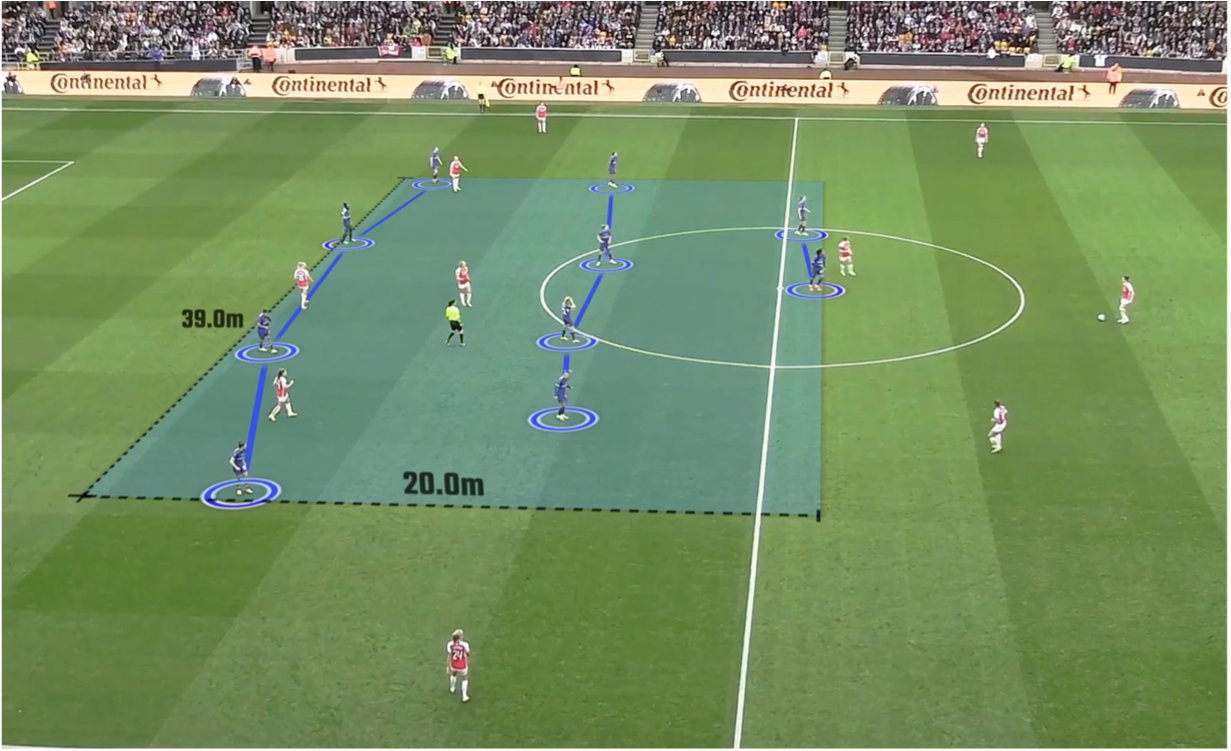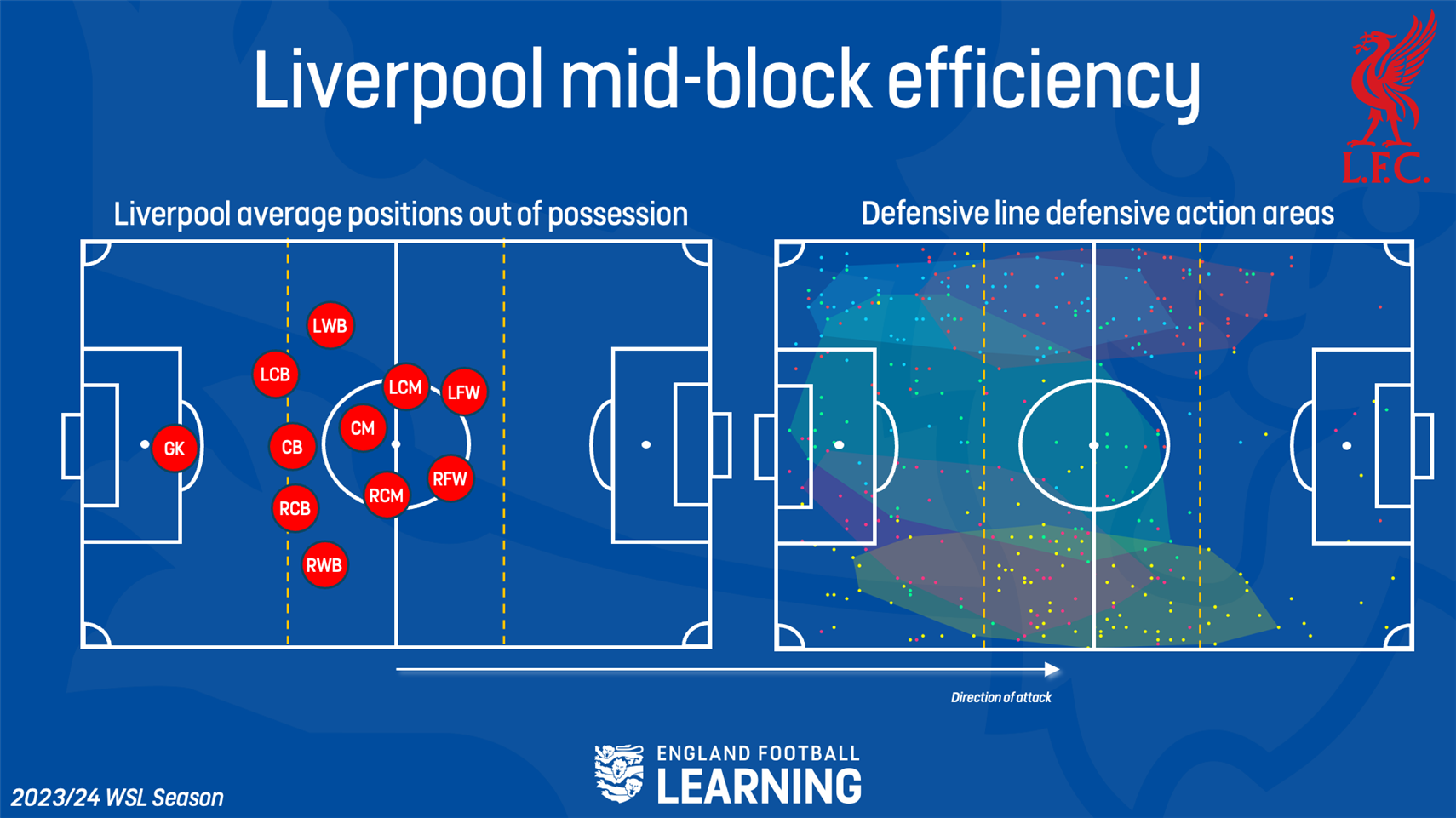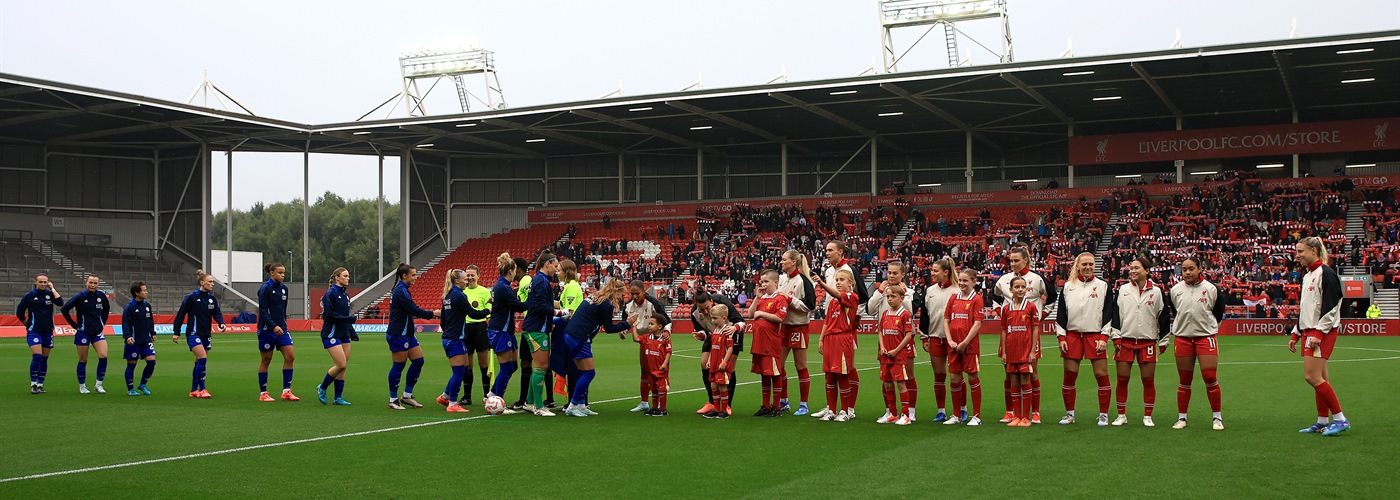What is a mid-block?
A mid-block involves defending the middle section of the pitch with the purpose of preventing the opposition from playing through you. In this blog, Katie Sorenson, Analyst and Coach, explores the tactics and strategies behind a mid-block; the importance of controlling the opposition without the ball, providing cover and balance for your teammates, and how compactness is crucial to team success out of possession.
One of my earliest football playing memories as a tough-tackling defender was my coach saying, ‘If you do not concede, you guarantee yourselves at least one point.’ This comment has stuck with me since and may be why I place such a high importance on how my team looks and works when they do not have the ball.
I have more recently been working with my players on how we operate within a mid-block. A defensive tactic that allows us to control the opposition’s decision-making on the ball, to actively press in areas we believe we can win it, but also allowing us to stay well organised and compact in central areas, making it more difficult for the opposition to play through us, and hopefully stopping us from conceding! The key to a good mid-block, is ensuring the distances between your outfield players and units are short, both laterally (from back to front) and vertically (left to right). This shape ensures there is good cover in central areas, making it really difficult for even the best teams to find gaps to play through.

Why would you implement a mid-block?
Setting up in a mid-block has many plus points. It can be utilised to conserve and maintain energy throughout the game, especially when playing against a team that you expect to have more of the ball. When out of possession, it can be very easy for players to chase and press to win the ball back. However, this can be very tiring, especially for younger players. Therefore, sliding and screening, showing control and restraint in a mid-block, ensures players physically do not run out of steam. It is a sure way to frustrate your opponents! Forcing teams to play around you, limits opportunities for their key players to receive the ball in between the lines in more dangerous central areas. It can allow you to utilise your strengths if you have full-backs who are great at defending aggressively in wide areas. And finally, shaping up in a mid-block encourages the opposition forward, which may leave space in-behind to exploit on the counterattack following an attacking transition. Check out the video of Liverpool Women below, to see a good team doing it well. As you watch the video, think about how Liverpool’s out-of-possession strategies and tactics allow for the out-of-possession principles of play to come to life.
What makes Liverpool so successful?
The data behind Liverpool’s out-of-possession success is really interesting. During last season’s Women’s Super League, Liverpool had a high mid-block efficiency percentage of 74%, which prevented their opposition from progressing their play past the midfield third 74% of the time they attempted to do so. This was bettered only by Chelsea, Arsenal and Manchester City, who all ended the season on 75%. Liverpool made the 2nd highest number of tackles, interceptions, and ball recoveries in the midfield in the 3rd last season and won possession of the ball 29 times per 90 within this third last season, the 2nd highest behind Chelsea. This demonstrates Liverpool’s recognition of their effectiveness at winning the ball in this midfield area and maybe a reason as to why they look to set up with this mid-block strategy.

The graphic on the left, shows Liverpool’s shape in their more commonly utilised 1-5-3-2 formation. Out-of-possession, they sit into a back five, with the wing-backs dropping in next to their centre backs, and closing the space between them, to narrow the team shape. The three in midfield stay compact, to limit opportunities for their opponents to find gaps in between to penetrate and play through. The two forwards sit in nice and deep, again, with limited space between them. This shape demonstrates very good cover and balance between the units in those central areas.
The visualisation on the right, highlights the areas of the pitch the Liverpool back five engages in defensive duels (tackles, interceptions, challenges, blocked passes). If we analyse this image, it brings to life how the majority of Liverpool’s defensive actions happen in wide areas of the pitch, rather than central areas. This suggests that, more frequently, engagement in out-of-possession actions occur here due to Liverpool’s mid-block shape forcing their opponents to play around them rather than through them. To be able to perform these actions well, Liverpool’s wing backs need to be switched on to recognising the moments to show control and restraint and sit into their back five shape, and then the moments to go and engage in wide areas in a 1v1 defending duel.
Summary
In order for players to be able to perform within a mid-block, they need to have tactical discipline and game understanding, recognising the moments to get into a mid-block shape, where on the pitch they should do it, and how to execute it. Using consistent language with your players can help support them with their decision making out of possession. The three C’s control, cover and compactness are key words to consistently use with your players.
- Control and restraint – help your players to recognise the correct moments to slide and screen as opposed to high press.
- Cover and balance – help your players have an appreciation for the space and players around them, looking to prevent the opposition from progressing and ensuring balanced defending across the pitch.
- Compactness – help your players understand the importance of getting narrow, reducing the space available to the other team, again, making it harder for them to progress up the pitch.
Want more?
Further resources:
- Article – What are the principles of football?
- Sessions – Practice sessions to try
- Blog – Out of possession principles of play
- How we play – Out of possession – England DNA resource


